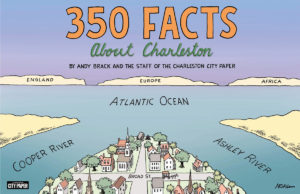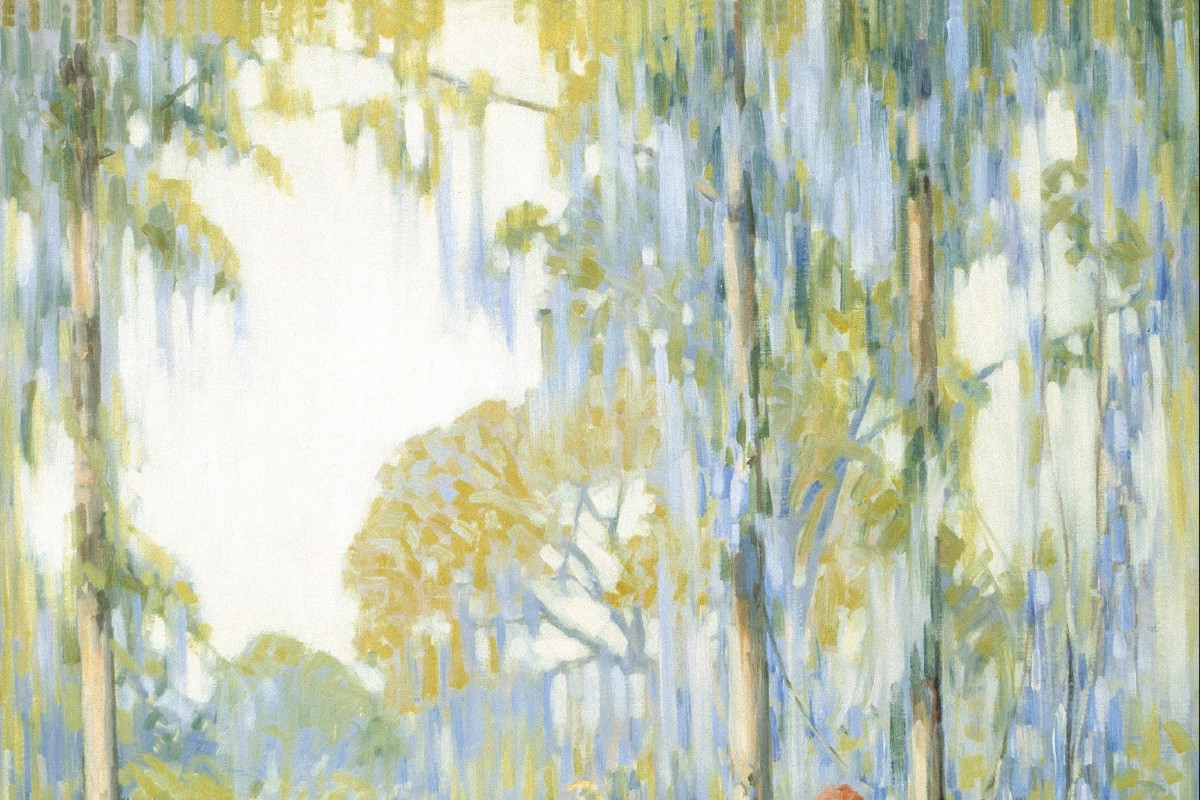By Skyler Baldwin | Between World Wars I and II, the city of Charleston experienced a boom in the arts as writers, architects, artists, musicians and historical preservationists came together to represent and improve the city. This “Charleston Renaissance” period was part of a greater interwar artistic movement known as the Southern Renaissance that swept through the region. Today, it is credited with helping to kickstart the city’s tourism industry.
 ORDER TODAY: Copies of a new book of historical facts about Charleston, aptly titled 350 Facts About Charleston, are in Lowcountry-area bookstores now, but if you can’t swing by, you can order a copy online today.
ORDER TODAY: Copies of a new book of historical facts about Charleston, aptly titled 350 Facts About Charleston, are in Lowcountry-area bookstores now, but if you can’t swing by, you can order a copy online today.
Smith remembered as a catalyst for the Charleston Renaissance
Alice Ravenel Huger Smith, born 1876, was a native artist and lifelong resident of Charleston. While she was primarily self-taught, she is best remembered for her scenic views of Charleston streets and poetic marsh vistas that capture the mystical aura of the Lowcountry. Hoping to convey an essential idealized representation of her subjects, she painted almost exclusively in watercolor from 1924 on. She, along with her associates, Elizabeth O’Neill Verner, Alfred Hutty, and Anna Heyward Taylor, was at the center of Charleston’s artistic reawakening during the early 20th century as a founding member of the Charleston Etcher’s Club and the Southern States Art League, as well as being involved in the Historic Charleston Foundation, Carolina Art Association, and Music and Poetry Society. Her work can be found today in many notable collections, such as the Brooklyn Museum, the Ogden Museum of Southern Art and the de Young Fine Arts Museums of San Francisco.
Painter, preservationist is a leader of rebirth of Charleston arts
Elizabeth O’Neill Verner was born in 1883 in Charleston, first studying art with Alice Ravenel Huger Smith and later enrolling at the Pennsylvania Academy of Fine Arts. In 1907, she married E. Pettigrew Verner; however, it wasn’t until 1925 that she would become a professional artist and the sole supporter for her children. She became a white portraitist known for representing African-Americans, especially the city’s flower vendors, and illustrated DuBose Heyward’s 1925 novel, Porgy. She came to specialize in drawings of historic buildings in effort to preserve the history of the city from her studio and home at 38 Tradd St. Her work is held by the Metropolitan Museum of Art, the Smithsonian American Art Museum and others across southeastern America. South Carolina’s highest arts award is named for her.
Hutty shows “decay and decrepitude” in his art
Renowned artist Alfred Heber Hutty, a northerner, is closely identified with the Charleston Renaissance of the 1920s because he rarely idealized the city, choosing instead to show the “decay and decrepitude” around him with his impressionistic oil paintings of Charleston streetscapes. He also depicted live oaks draped with Spanish moss, dilapidated old buildings and animated African Americans. In 1919, Hutty discovered Charleston while looking for a warmer place to spend his winter months. He embraced Charleston’s beauty and lifestyle and for the rest of his life, he alternated homes between summers in Woodstock, N.Y., and winters in Charleston. Today, Hutty’s work can be found around the state and in the Library of Congress, with the largest collection owned by the Gibbes Museum of Art.
Printmaker seen as one of the leading Charleston Renaissance artists
Anna Heyward Taylor was born in Columbia in 1879 as one of eight children of a surgeon who served in the Civil War in the Army of Northern Virginia. She received an education from the South Carolina College for Women and graduated in 1897 before traveling around Europe to study art between 1903 and 1917. She then served in the American Red Cross in France and Germany during World War I, returning to America and settling in Charleston in 1920. There, she became known for her prints highlighting life in the Lowcountry, including agricultural subjects both past and present, local fauna and flora, architecture, street scenes and the city’s tradespeople. Alongside Alice Smith, Elizabeth O’Neill Verner and Alfred Hutty, Taylor is today considered one of the four leading artists of the Charleston Renaissance.
Skyler Baldwin, a staff writer of the Charleston City Paper, contributed to 350 Facts About Charleston, from which these entries are excerpted.
- Preview the book by visiting CharlestonFacts.com.




 We Can Do Better, South Carolina!
We Can Do Better, South Carolina!
























